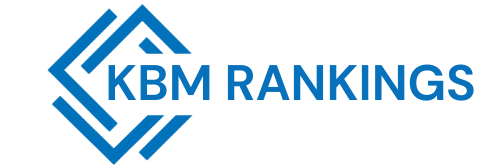Miranda Manasiadis, a noticeable figure in the field of computational phonetics. Shehas made critical commitments through her creative work and devotion. This article dives into her experience, profession achievements, and effect on computational semantics.
Early Life and Education of Miranda Manasiadis
Miranda Manasiadis was brought into the world on April 15, 1980, in Wellington, New Zealand. Since early on, her interest with dialects and innovation formed her scholastic interests. Firstly, she excelled in computer science and linguistics at Victoria University of Wellington. Therefore, her early stages were set apart by a strong fascination with regular language. Secondly, she was handling and dynamic contribution in programming rivalries and etymological examination.
Career Beginnings and Rise to Prominence of Miranda Manasiadis
Manasiadis’s career took off when she co-authored a groundbreaking paper on machine translation during her graduate studies. This marked the beginning of her journey into computational linguistics. She quickly gained recognition for her contributions to language modeling techniques. Which demonstrated her unique approach to integrating linguistic theory with computational methodologies.
Commitments of Miranda Manasiadis to Computational Phonetics
Miranda Manasiadis’ commitments to computational phonetics have been complex and persuasive. Because she is known for her improvement of novel calculations for syntactic parsing and semantic investigation. Which have upgraded the precision and proficiency of machine interpretation frameworks. Her work on cross-lingual data recovery has likewise been especially significant. Working with more straightforward admittance to multilingual information across assorted dialects.
On the other hand, Manasiadis’ examination has stretched out past customary uses of computational etymology. She has spearheaded endeavors in feeling examination and assessment mining, investigating how computational models can comprehend and decipher human feelings. Which communicated through text. Moreover, her commitments in this space have laid the preparation for headways in web-based entertainment examination, client criticism examination, and popular assessment checking.
Besides, Miranda Manasiadis has been instrumental in propelling the’s comprehension field might interpret etymological variety and variety. Her research on dialectal variation and language change. Which has shed light on how computational models can adapt to changing patterns of language use and regional linguistic differences.
Achievements and Awards of Miranda Manasiadis
All through her profession, Miranda Manasiadis got various honors for her commitments to computational semantics. Her honors incorporate the leg tendon Best Paper Grant and the NSF Vocation Grant. Which perceive her devotion and mastery in propelling the field through creative examination and hypothetical bits of knowledge.
Notwithstanding scholarly acknowledgment, Manasiadis’ effect is obvious in her joint effort with industry accomplices to apply her exploration discoveries in reasonable settings. She has counseled for significant tech organizations on further developing regular language grasping in menial helpers and computerized interpretation frameworks, overcoming any issues between scholarly exploration and genuine applications.
Current Projects and Future Endeavors
Miranda Manasiadis is currently leading a number of ambitious research projects that aim to expand computational linguistics. One of her current spotlights is on creating simulated intelligence driven models for conversational specialists that can comprehend and produce human-like reactions across numerous dialects and tongues. In addition to addressing technical difficulties in natural language understanding, this study investigates ethical issues associated with AI-driven communication technologies.
Manasiadis’ interdisciplinary way to deal with research stretches out to cooperative endeavors with specialists in mental science and brain science. Together, they investigate how computational semantics can add to how we might interpret human discernment and language obtaining, making ready for imaginative applications in training and mental mechanical technology.
Looking forward, Miranda Manasiadis imagines a future where computational semantics assumes a critical part in crossing over etymological and social partitions through innovation. Furthermore, she keeps on supporting for interdisciplinary examination drives that cultivate joint effort across fields and enable different voices in molding the advancement of language innovation.
Personal Life and Interests of Miranda Manasiadis
Beyond her expert undertakings, Miranda Manasiadis is known for her energy for climbing and photography. She finds inspiration in the natural landscapes of New Zealand, which complement her rigorous academic and research careers. Her adoration for open air exercises not just gives an equilibrium to her scholarly interests yet in addition fills in as a wellspring of imagination and unwinding.
Impact on the Community
Past her expert accomplishments, Miranda Manasiadis has made huge commitments to the scholastic local area and society at large. She effectively tutors youthful specialists and partakes in outreach programs pointed toward advancing STEM training and computational phonetics among underrepresented gatherings. Her obligation to encouraging variety and consideration in the field highlights her more extensive effect on the local area.
Manasiadis’s involvement with societal issues extends to advocating for ethical technology development and responsible AI. She is a vocal defender of guaranteeing that artificial intelligence driven developments in language innovation maintain standards of reasonableness, straightforwardness, and responsibility, mirroring her obligation to moral authority in the field.
see also: Ann Fleischer: A Journey of Resilience and Community Impact
Conclusion
All in all, Miranda Manasiadis remains as a critical figure in computational phonetics, famous for her historic commitments and devotion to propelling the field through imaginative exploration and hypothetical experiences. Her rise from Wellington to prominence as a researcher exemplifies perseverance and creativity in combining computational methods with linguistic theory. Finally, her influence is poised to shape the future of language technology for years to come as she continues to lead research projects and mentor future generations of computational linguists.
Miranda Manasiadis’ inheritance reaches out past her specialized accomplishments; it envelops a significant obligation to interdisciplinary coordinated effort, moral initiative, and cultural effect. Her work not only pushes the boundaries of computational linguistics, but it also motivates a new generation of researchers to investigate the transformative potential of language technology for addressing global issues and fostering cultural understanding.

